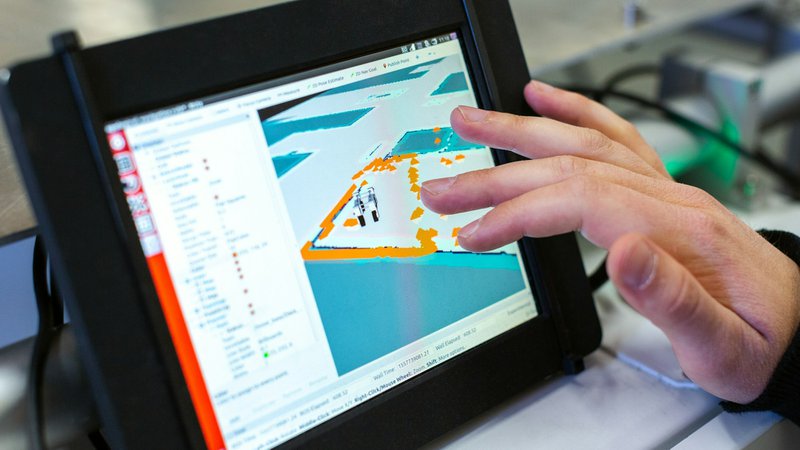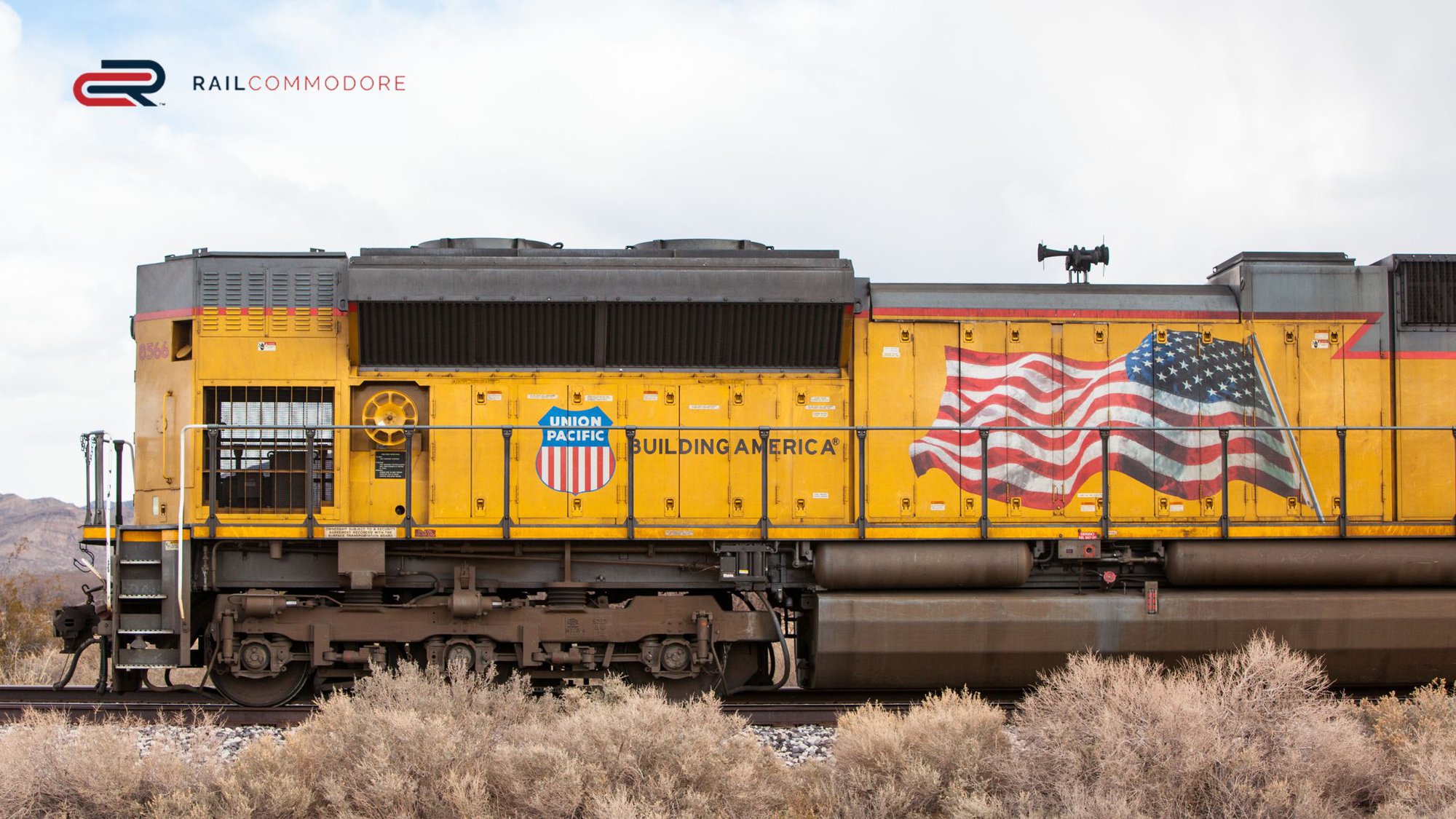In rail logistics, delays and inefficiencies can impact your bottom line. Transload software works to help efficiently manage freight transfers between rail, truck, and warehouses. It improves shipment visibility, automates workflows, and integrates with logistics systems. If you're a rail shipper handling complex freight movements, knowing how this software functions can improve overall operations. Transload software can simplify logistics and increase efficiency.
Key Takeaways:
- Transload Software: manages freight transfers between transport modes, reducing delays and also errors.
- Bill of Lading (BoL) Creation: shipment tracking and container weight monitoring to maintain compliance.
- Demurrage Clocks: Help avoid costly railcar fees
- Cloud-based Systems: lower IT costs and allow remote access
- Transloading vs. Intermodal: Transloading physically moves freight, while intermodal keeps it in the same container.
- API & ERP integration: synchronizes data across the warehouse (WMS) as well as transportation (TMS) systems.

How Transload Software Works
Definition and Purpose of Transload Software
Transload software works by assisting in moving freight between different transport modes, such as trucks and trains. It ensures smooth shipment transfers, allowing for reduced delays and extra costs. Businesses use it to track goods, plan transfers, and manage documentation. Without it, shifting freight between transport types would be slower and more prone to mistakes.
Key Functions in Logistics and Supply Chain Management
This software automates various freight movement tasks. It generates electronic Bills of Lading (BoL), reducing errors and speeding up documentation. Workers use mobile apps to update shipment status, keeping teams informed. It also tracks container weights, an important feature since 20% of shipped containers have incorrect weight data. Accurate weight records help companies avoid safety risks and fines.
The demurrage clock monitors railcar dwell time to prevent costly fees. In 2022, companies lost an average of $664 per delayed container, highlighting the need for automated tracking. Automated inventory tracking reduces misplaced shipments as well as inefficiencies, an issue affecting 65% of businesses.
Many systems operate on the cloud, which leads to lower IT expenses and enables remote access. With 64% of companies increasing IT budgets for cloud-based logistics in 2024, this feature is becoming a standard practice. Some systems also send automated Proof of Delivery (PoD) emails to customers. This reduces disputes and minimizes package theft, which has affected around 44% of consumers.
Differences Between Transloading and Intermodal Transportation
Transloading involves physically moving goods between transport types. For example, grains arriving by rail may be transferred into trucks for delivery. The primary advantage of this is flexibility. If a shipping route changes, companies can switch transport modes.
Intermodal transportation keeps goods in the same container while transferring between transport types. A container might start on a truck, move to a train, and then return to a truck for final delivery. This method decreases handling and lowers the risk of damage.
Each approach has its benefits. Transloading works best for freight requiring repacking, consolidation, or last-mile delivery. Intermodal is suitable for long-haul shipments along major freight corridors. Businesses select their preferred method based on cost, speed, and handling needs.
For more details on how transload software works, visit The Power and Benefits of Transloading Software.
The Key Features of Transload Software
Customizable Bill of Lading (BoL) Templates
A Bill of Lading (BoL) is a crucial freight shipping document. Transload software offers customizable BoL templates that allow businesses to generate accurate digital paperwork faster. This reduces manual errors, saves time, and also lowers costs.
With digital BoL templates, documents can be edited, canceled, and reissued quickly. This is especially useful for handling last-minute changes. Without this feature, businesses may rely on outdated paperwork, increasing billing disputes and compliance risks.
Integration with Financial and Logistics Systems
Seamless integration with logistics technology, such as warehouse management systems (WMS) and transportation management systems (TMS), enhances efficiency. This connectivity ensures automatic updates to shipment, billing, and tracking data.
Without integration, logistics teams must manage multiple platforms manually, which can lead to increased errors. Cloud-based transload software works to synchronize financial and logistical data instantly. This lowers the probability of data entry mistakes and improves workflows.
Businesses aiming to optimize freight operations may also explore rail logistics software, which offers benefits like automated dock scheduling and digital Proof of Delivery tracking.
For further details on functionality, refer to this transloading software overview.
How Transload Software Works with Warehouse and Transportation Management Systems
Warehouse Management Integration for Efficient Storage and Transfer
Transload software works with warehouse management systems (WMS) to improve inventory tracking and storage. A WMS streamlines storage and shipment processes by monitoring stock levels, locations, and also movements.
Barcode scanning registers inventory changes instantly, reducing misplacement. Some systems use 3D mapping to maximize warehouse space, leading to enhanced bulk freight organization.
This software also assists in dock scheduling as well as preventing congestion by organizing truck arrivals and departures. As inventory moves out, stock levels are updated instantly, ensuring accuracy in order fulfillment.
Transportation Management System (TMS) Connectivity
A transportation management system (TMS) coordinates shipments across rail, truck, and sea transport. When integrated with transload software, route planning and delivery coordination become more efficient.
Track and trace software sends automatic shipment updates, helping logistics teams handle disruptions. If delays occur, dispatchers and warehouse managers can adjust schedules proactively, minimizing costly detention fees.
A TMS also manages freight costs by comparing different shipping routes, helping businesses choose economical and efficient options. It identifies opportunities for freight consolidation, leading to lower transit costs.
API and ERP Integration for Streamlined Operations
How transload software works is by utilizing APIs (Application Programming Interfaces) and ERP (Enterprise Resource Planning) platforms to connect with financial and logistics systems. APIs ensure smooth data exchange between WMS, TMS, and billing platforms.
For instance, when a Bill of Lading (BoL) is created, ERP systems update financial records automatically, eliminating duplicate data entry. Automated Proof of Delivery (PoD) emails further enhance efficiency by confirming shipments electronically, reducing paperwork.
By integrating with predictive analytics tools, transload software aids in forecast planning. This prevents overbooking and idle transport equipment. Cloud-based computing supports scalability, allowing companies to expand operations without significant IT investments.
The Benefits of Using Transload Software for Logistics Operations
Logistics Automation for Efficiency
Transload software reduces errors by automating key logistics functions. Customizable Bill of Lading (BoL) templates eliminate document mistakes and also keep shipments on schedule.
Mobile access ensures that teams remain connected. This enables automatic inventory updates and shipment tracking. Without mobile capabilities, communication gaps increase operational inefficiencies.
Inventory tracking reduces stock discrepancies. Businesses leveraging cloud-based inventory systems maintain higher accuracy levels due to minimal delays and lost goods.
Freight Cost Control with Optimized Load Planning
Transload software assists businesses in selecting cost-effective shipping options. Container analytics monitor cargo weight, preventing compliance violations.
Automating freight consolidation minimizes transport units, which reduces costs. Many companies save significantly by optimizing load planning.
The demurrage clock prevents detention fees. In 2022, average storage overage costs reached $664 per container.
Improved Freight Carrier Communication
Miscommunication in freight handling causes costly mistakes. Automated Proof of Delivery (PoD) emails minimize them.
Inaccurate scheduling leads to delays. Dock scheduling software improves efficiency, reducing truck wait times. A 30-minute reduction per truck saves businesses substantial labor costs each week.
How transload software works is to enhance collaboration, lower expenses, and improve logistics management. RailCommodore empowers rail industry professionals with intuitive software solutions that simplify operations, optimize resources, and drive sustainable growth. Visit the RailCommodore website to learn more about how transload software works. Contact Railcommodore today to get started on finding the right solution for your business.

Leave a Reply